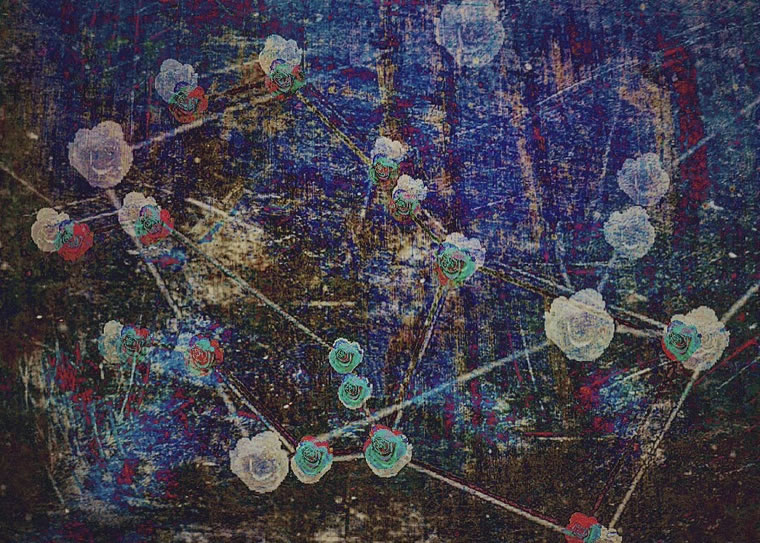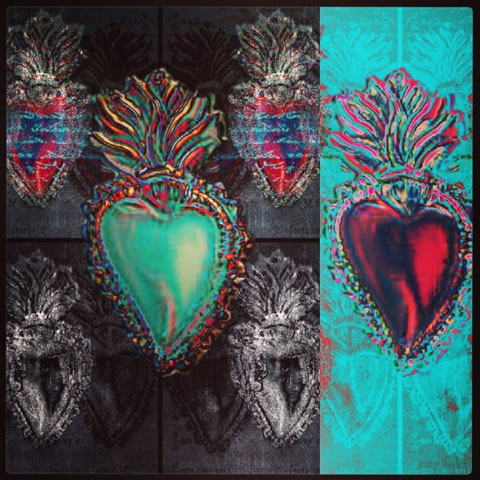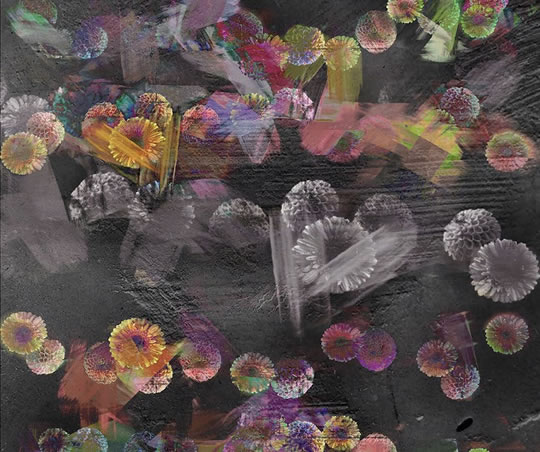Originally published Dec. 21, 2017 | Link to original

Dear Friend and Reader:
For the past two months in this series [see part one, and part two], we’ve been looking at the outer planet transits that take hold in 2018 and last years into the future. Saturn entered Capricorn on Dec. 19, which will be followed by Chiron entering Aries on April 17 and Uranus entering Taurus on May 15.
Just these three events, in such close proximity, describe a rapidly changing world. Distant outer planets describe the energy coming from the ground, as in figure-ground. They’re a background environmental factor that gradually manifests in tangible ways — or as the case may be, instantly.
To give two particularly stunning examples, the day Chiron entered Pisces in 2010, the Deepwater Horizon oil rig exploded, leading to one of the worst oil spills in history. The day Uranus entered Aries in 2011, there was an earthquake that took out the Fukushima Daiichi nuclear power station, resulting in several total meltdowns and the mess that followed.

Of course, most of the news that gets reported is bad news: by definition, that’s what news is. We don’t know what breakthroughs or discoveries happened those days. We don’t know what ideas were born. At least these two events put us on notice to pay attention to the sign changes of slow-moving planets.
While Saturn is not an outer planet, it’s the keeper of the edge between the inner and outer solar system; a reference point, boundary divider and the lord of chronological time. Saturn’s three-year run through Sagittarius ended Dec. 19 when, for the first time in a generation, it returned to a sign that it rules.
Because Pluto is also in Capricorn, Saturn’s ingress begins something called the Saturn-Pluto conjunction, associated with an even bigger event, the Pluto return of the United States. Pluto, which takes 250 years to orbit the Sun, entered Capricorn in January of 2008, retreating briefly into Sagittarius for the summer and election of Barack Obama, then returning to Capricorn after the election, where it remains today. Pluto is now close to its natal position in the chart for the signing of the Declaration of Independence.
Capricorn is the sign that represents (among other metaphors) industry, government and society’s major institutions. So when we combine transiting Saturn, transiting Pluto and the natal position of Pluto in the U.S. chart, that’s going to move some energy in the world around us.
Here’s something novel: for the 2020 election, planets in Capricorn will include Quaoar, Pholus, Pallas, Jupiter, Pluto and Saturn. Pallas is an asteroid named for the goddess of law and politics. Quaoar and Pholus are rather different from asteroids; I’ll come to them in a moment when I introduce the idea of a minor planet.
Now that Saturn is in Capricorn, it’s fair to say we’re in a new era of history. In a recent New York Times interview about this astrology, I said that, “We are entering the biggest point of reckoning in American history since the Civil War.”
With Saturn in Capricorn as our foundation, let’s check out the minor planets.
Chiron: The Original Minor Planet
First, a distinction between a visible and an invisible planet. You might think of objects that can be seen with the unaided eye as being part of ordinary consciousness. That includes the Sun, the Moon, Mercury, Venus, Mars, Jupiter, and Saturn. Under very rare conditions, Uranus and the asteroid Vesta can be seen without a lens. Occasionally comets show up, and if you look back at the old books, they made astrologers of the past exceedingly nervous.

Besides that, all other orbiting objects are invisible without the use of special equipment, and can be considered part of non-ordinary consciousness. In fact most objects are invisible without a telescope, and that includes all of the minor planets.
Technically, a minor planet is anything with a catalogue number from the Minor Planet Center, also called an MPC number. Currently there are about 750,000 known bodies orbiting our Sun, which are either in the catalog or close to being entered. This catalog includes a wide diversity of types of object.
A minor planet is not minor in the sense of the minor leagues in a sport, where seemingly less important things happen, or a minor role in a film. It’s more like a minor key in music, which is in no way a thing of lesser importance in music theory or musical history. Arguably there are more memorable, moving songs written in minor keys than in major keys. This is also true of the minor planets, though they are largely ignored by established astrology; this fact largely accounts for its bland flavor and inert quality.
The first solar system object discovered that eventually became a minor planet was Ceres, which was seen on Jan. 1, 1801, the first day of the 19th century. Ceres was first classified as a potential comet, then as an asteroid; then in 2006, it was given the new designation “dwarf planet” (along with Pluto and Eris).
From an astrological standpoint, the concept of a minor planet emerges with the discovery of something called Object Kowal in 1977 — that became Chiron. Chiron is a small body, about the size of an asteroid, but it is made of ice like a comet, with a tail like a comet, and with an atmosphere; and it has an odd 51-year orbit of a kind that nobody had ever seen before. What the first astrologers who danced with Chiron discovered is that it was astonishingly potent, especially for a small object, and it represented elements of psychic development and of healing that had not been seen before in astrology (but were well known in other fields).
In the broadest terms, Chiron represents the holistic principle. In the natal chart, Chiron represents a place where we seek wholeness. We may have sustained an injury there, though that point remains alive and active and often has a way of concentrating some unusual talent, gift or strength.
Sometimes Chiron manifests as a point of defeat or, psychologically, as the feeling of an injury that will never heal or a problem that will never be solved. However, I have found that through conscious process (particularly, working with one’s lifetime Chiron transits), the gift can almost always be claimed.
There will often be what homeopaths call a “healing crisis” involved: a seeming mishap or series of them associated with the process of mounting the healing journey in a conscious way.

Chiron is about to enter Aries. This is happening in an era already dominated by astrology in this sign, particularly the epic Uranus-Eris conjunction of 2016-2017 that is one of the outstanding astrological monuments of a very long era.
Eris, the goddess of discord, is the standard-bearing minor planet of our time. This conjunction is largely about the digital age and the supremacy of technology — and what it’s done to our identity (Aries, collective and individual identity).
Quoting Prof. Eric McLuhan yet again: “The body is everywhere assaulted by all of our new media, a state which has resulted in deep disorientation of intellect and destabilization of culture throughout the world. In the age of disembodied communication, the meaning and significance and experience of the body is utterly transformed and distorted.”
What he’s saying is that this assault on our minds is really pushing us out of our bodies, or distorting our relationship to them, and that’s messing not just with individual identity but also with collective identity.
Chiron in Aries will precipitate or ignite a healing process that helps us address this very troublesome state of affairs. Just remember, as the old song goes, waking up is hard to do. It’s a lot easier if voluntary — if we want to be conscious, which means admitting that some other state preceded full awareness.
Summing up Chiron in Aries in a phrase, this is about coming out of denial, no matter how difficult that might be — and thereby finding something better.
And what might that be? Notably, when Chiron enters Aries, one of the first things it does is make a conjunction to a slow-mover called Salacia, which is hovering around the first degree of Aries this year. The mythological wife of Neptune, Salacia (a dwarf planet candidate) has an unusual 271-year orbit. She’s also the root of the word salacious. While astrology does not usually draw such a direct line of etymology to the meaning of a planet, we’ve seen quite a bit of that lately with Salacia sitting on the face of the ‘personal is political’ Aries Point for many seasons.
In my happy dreams, Chiron conjunct Salacia is going to be about the conscious claiming of not just sexual identity but of actual sexual being. The “sexual revolution” we need is one associated with holistic healing, and an understanding of the relationship between sex and existence.
Pholus and Quaoar in Capricorn
Pholus was the second planet designated in the centaur group, discovered in 1992. Pholus orbits the Sun in 92 years. The discovery of (5145) Pholus opened up a floodgate of centaur and Kuiper belt discoveries, now numbering more than a thousand.
Welcome to the energy of Pholus, which comes in two main forms: the uncontrollable, uncontainable reaction, and the small cause with a big effect. Pholus is involved in the seemingly nonstop revelation of sexual misconduct. Alternately, if someone takes a single dose of a homeopathic remedy, and that helps a person heal from an illness, we have an example of the small cause with a big effect.

Pholus enters Capricorn on Jan. 20, 2018, which plunges it into the realm of corporations and government. Isn’t it amazing that with all the infinite varieties of corporate exploitation and criminal activity, all we’ve heard about anytime lately is sexual transgression? We may be hearing about a lot more than that as this transit develops.
Ten years after the discovery of Pholus, an object called Quaoar was discovered way out in the Kuiper belt, past Pluto. Named for the creator god of the Tongva people (who used to inhabit what is now the LA-area), its technical classification is “cubewano.” Originally called 2002 LM60, it was considered such an important discovery that it was given the designation (50000) Quaoar. It takes just over 287 years to orbit our Sun.
Now that you know all of that, here’s the news: Quaoar was discovered in Sagittarius, where it was until mid-December, when it entered Capricorn. At its essence, Quaoar is about family patterns. And now it’s in the sign of corporations and governments — and one of the signs most associated with family.
Note that Quaoar in Capricorn is square Salacia in Aries. This is bringing the most impersonal corporate and governmental realms into the personal, individual ones. Yet the underlying message is that this is about the family, and what happens there.
For all the taboo associated with the subject, we will discover that sexuality is a family affair, and that everything we experience and see in society is a dramatization of the sexual business within the household and the tribe. All of the sexual misconduct that has been revealed since early October has its origin in the household and in early childhood — along with every other form of sexual reality. And if we’re going to be free of this blight, that’s where we need to go for our answers.
It is true that the minor planets often represent the subjects neither society nor astrology want to address. Too often we relegate these issues to the courts. However, from where we stand today, ignorance, inaction and deferring to the government are no longer options. It’s time to get over ourselves: our shame, embarrassment and guilt; and let our life force out into the open.
Lovingly,




